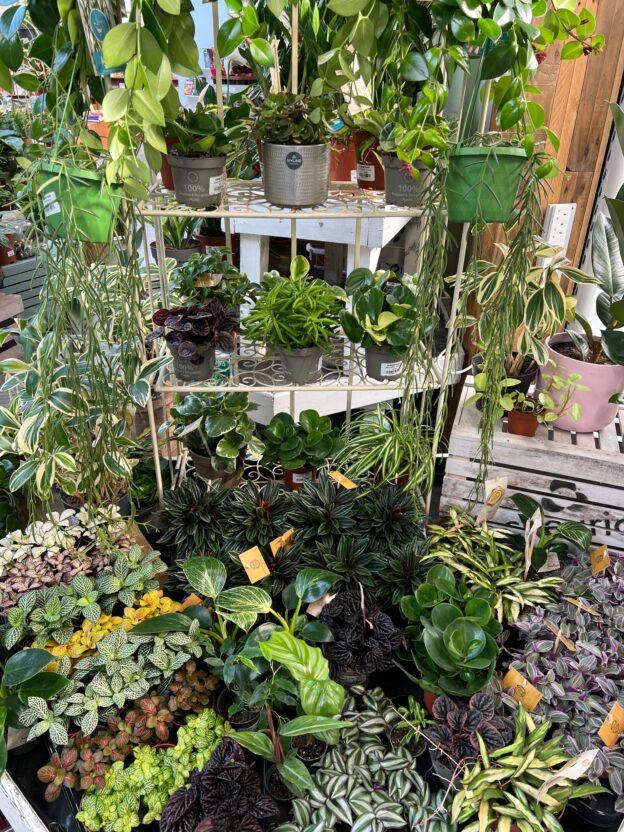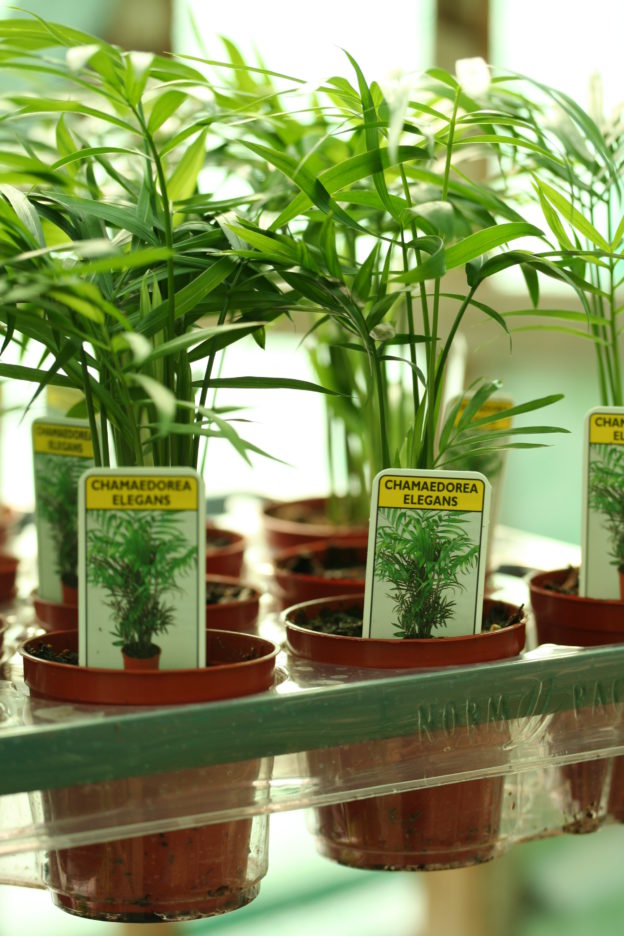We’ve had a lot of questions about looking after houseplants at this time of year (January).
Lighting
Firstly you need to make sure your houseplants are in the right position, receiving the right amount of light and within the correct temperature range. Nearly all houseplants come with care labels that provide this kind of information, but if you’re still not sure just ask one of our plant staff when you next visit or buy a houseplant book from our book department. As a general rule most houseplants do not like direct sunlight (as it can scorch their leaves) but most need some sunlight! Because we have less sunlight hours and a ‘weaker’ sun in winter, you may need to re-position your houseplants as we move into spring and summer.
Watering
The main cause of “houseplant death” is overwatering. If you’re not sure how much to water, it’s better to err on the dry side rather than give your plants too much water.
With all houseplants, a little bit of research goes a long way and the more you know about the plant you have the better your watering will be as by understanding where the plant grows naturally you can try and recreate those growing conditions. Cacti and succulents for example come from hot dry climates so you water them less. Some plants that come from tropical climates will benefit from increased humidity, so by placing them in a saucer filled with chippings and water you will increase the humidity around the plant. As a general rule of thumb for plants in a free draining soil you want to water when the pot feels light to lift and when the top inch of soil feels dry when you stick a finger in.
Feeding
During the winter you shouldn’t need to feed your houseplants. Feeding is best during spring and summer. We sell lots of specialist feeds in our garden centre so we are certain we have the right one for your plants but if you have a variety of plants it is best to get an ‘all round’ feed. We recommend wither Baby Bio Plant food or Houseplant Focus Liquid feed. Both products are available as a concentrate you dilute with water or as a drip feeder which you can insert into your plant pots.
Re-potting
If you have owned your plant for sometime now, take a few seconds to look at it’s roots. Give the plastic pot your plant will have come in a gentle squeeze to loosen it and gently pull it away from the plant. If your plant roots are swirling around creating a compact root ball that is binding all the soil together; then you need to re pot it.
choose a pot that is one to two sizes larger than the post you already have as it is better for the plant to gradually increase the size of its root ball and should lead to a stronger, healthier houseplant. The size of a pot is usually marked on the bottom and will either be in cm or litres. If in doubt measure the diameter at the top and the pot depth.
You will need a general houseplant repotting mix to complete the job.
Repotting is best completed in the spring but you can get your pot and compost now ready for when you repot in March.
Remove dust
We expect you keep a beautiful dust free house but whilst most of us give the odd dust to surfaces, houseplants tend to get forgotten. Yet houseplant leaves are surfaces too and they can get clogged!
You can either put your plants in the shower and gives them a gentle wash or for plants with smooth leaves use a cloth and gently wipe from stem to leaf tip. For hairy leaved plants, use a soft brush (like a paint brush) to brush the dust off. Your plant will look better and it will also be able to soak up more light.
Deadhead
When a flower has finished and started to shrivel, remove the stem from your plant to encourage more blooms to develop and help prevent disease problems. You can get scissors called snips just for the job or you can use any sharp scissors (just make sure they are clean).
Watch out for pests
There are a few common pests that can attack houseplants from time to time. The main culprits are red spider mite, mealybug, aphids, fungus gnats and scale insects.
There are several options for each type of pest but for all pests prevention is better than cure so providing you take good care of your plants, pests should stay away. However if you need to control pests there are either non-organic solutions (pesticides) or organic solutions. We have both options available to you in our shop so please tell us what you a problem with and we will find a solution. A good first step though is to remove as many culprits as possible through washing them off or crushing them between your fingers. A mild mix of washing up liquid and water creates a good wash.
Want to know more?
Our garden centre has a lot of helpful books on houseplants and their care and our staff will be pleased to assist you and offer advice in person, click here for our opening hours.
If you want to read more online, we recommend referring to the Royal Horticultural Society.











